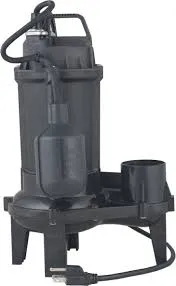Khmer
- Afrikaans
- Albanian
- Amharic
- Arabic
- Armenian
- Azerbaijani
- Basque
- Belarusian
- Bengali
- Bosnian
- Bulgarian
- Catalan
- Cebuano
- Corsican
- Croatian
- Czech
- Danish
- Dutch
- English
- Esperanto
- Estonian
- Finnish
- French
- Frisian
- Galician
- Georgian
- German
- Greek
- Gujarati
- Haitian Creole
- hausa
- hawaiian
- Hebrew
- Hindi
- Miao
- Hungarian
- Icelandic
- igbo
- Indonesian
- irish
- Italian
- Japanese
- Javanese
- Kannada
- kazakh
- Khmer
- Rwandese
- Korean
- Kurdish
- Kyrgyz
- Lao
- Latin
- Latvian
- Lithuanian
- Luxembourgish
- Macedonian
- Malgashi
- Malay
- Malayalam
- Maltese
- Maori
- Marathi
- Mongolian
- Myanmar
- Nepali
- Norwegian
- Norwegian
- Occitan
- Pashto
- Persian
- Polish
- Portuguese
- Punjabi
- Romanian
- Russian
- Samoan
- Scottish Gaelic
- Serbian
- Sesotho
- Shona
- Sindhi
- Sinhala
- Slovak
- Slovenian
- Somali
- Spanish
- Sundanese
- Swahili
- Swedish
- Tagalog
- Tajik
- Tamil
- Tatar
- Telugu
- Thai
- Turkish
- Turkmen
- Ukrainian
- Urdu
- Uighur
- Uzbek
- Vietnamese
- Welsh
- Bantu
- Yiddish
- Yoruba
- Zulu
Telephone: +86 13120555503
Email: frank@cypump.com
វិច្ឆិកា . 18, 2024 11:13 Back to list
sand gravel pump
The Importance and Functionality of Sand and Gravel Pumps
In the world of construction, mining, and dredging, the efficient transport of solid materials like sand and gravel is a crucial aspect that cannot be overlooked. This is where sand and gravel pumps come into play. These specialized pumps are designed to handle abrasive materials and are essential for various applications, ensuring the smooth flow of operations in industries where sediment transfer is a necessity.
What is a Sand and Gravel Pump?
A sand and gravel pump is a type of centrifugal pump specifically engineered to move sand, gravel, and other coarse materials. Unlike standard water pumps, these pumps are constructed with more robust materials and feature larger impellers and casings to accommodate the heavier and more abrasive nature of their cargo. This design minimizes wear and tear, extending the lifespan of the pump and ensuring it can handle tough working conditions.
Applications of Sand and Gravel Pumps
Sand and gravel pumps are widely used in various sectors. In the construction industry, they are essential for transporting sand and aggregate to concrete mixing sites. The mining industry also relies on these pumps to transport slurry mixtures from the extraction site to processing facilities. Dredging operations, aimed at deepening harbors or rivers, utilize sand and gravel pumps to remove sediment and debris efficiently.
Moreover, these pumps are not limited to land-based applications. They are often deployed in underwater dredging activities where traditional excavation methods are unsuitable. The pumps efficiently move sediment from the seabed, playing a vital role in maintaining maritime infrastructure and ecosystems.
Advantages of Using Sand and Gravel Pumps
1. High Efficiency Sand and gravel pumps are designed for optimal performance, ensuring that large volumes of materials can be transported quickly. Their high flow rates save time and increase productivity on job sites.
2. Durability Constructed from wear-resistant materials, these pumps can withstand the rigors of harsh environments. Their durability lowers maintenance costs and reduces downtime, allowing for continuous operation.
sand gravel pump

3. Versatility These pumps can handle a variety of materials, from fine sand to larger gravel stones. This versatility makes them suitable for a range of applications, adapting to the specific needs of different projects.
4. Cost-Effectiveness By reducing the need for manual handling and increasing efficiency, sand and gravel pumps can significantly lower operational costs. Faster transport times mean quicker project completion and reduced labor expenses.
Maintenance of Sand and Gravel Pumps
To ensure the longevity and efficiency of sand and gravel pumps, regular maintenance is crucial. This includes the following practices
- Inspections Routine checks can help identify wear and tear on key components such as impellers and seals. Early detection prevents further damage and costly repairs. - Cleaning After use, the pumps should be thoroughly cleaned to remove any residual sand and grit. This prevents clogging and preserves the internal mechanisms of the pump.
- Lubrication Proper lubrication of moving parts is essential for reducing friction and preventing wear.
- Replacement of Parts Components that show signs of significant wear should be replaced promptly to maintain optimal performance.
Conclusion
Sand and gravel pumps are indispensable tools in the construction, mining, and dredging industries. Their ability to efficiently transport abrasive materials makes them a vital component of many projects. With advantages such as high efficiency, durability, and cost-effectiveness, these pumps not only facilitate smoother operations but also contribute to the overall success of various industrial applications. As technology advances, we can expect further innovations in pump design and functionality, ensuring that they continue to meet the evolving needs of these demanding industries. As such, investing in quality sand and gravel pumps and adhering to proper maintenance protocols will yield significant benefits for operators and project managers alike.
-
Custom Drilling Mud and Slurry Pump Supplier - High Efficiency, Tailored Solutions
NewsJun.10,2025
-
Supply Vertical Submersible Sewage Pump High-Efficiency WQ/QW Pumps Supplier
NewsJun.10,2025
-
Premium Sewage Ejection System & Pumps Efficient Waste Removal
NewsJun.09,2025
-
Premium Wholesale Slurry Pump Impellers Durable & Efficient Slurry Handling
NewsJun.09,2025
-
Top Sewage Pump Companies Durable Industrial Solutions for Efficiency
NewsJun.09,2025
-
Heavy Duty Slurry Pumps - OEM High Performance & Bulk Wholesale
NewsJun.09,2025










